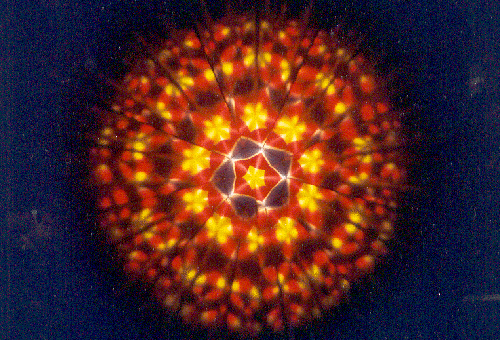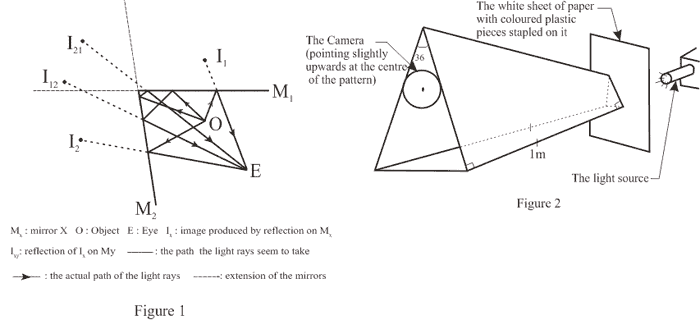Symmetry in Nature
 |
A kaleidoscope is an instrument that creates a circular, symmetrical pattern by taking advantage of multiple mirror reflections. When two plane mirrors are placed side by side at an angle of θ, the eye, E, (Fig. 1) can see several images of the object, O, depending on the size of θ - there are 360o / θ - 1 images produced, plus the original. This picture is taken inside a kaleidoscope that uses two identical plane mirrors at an angle of 36o, creating a ten-sided image. A third mirror is used in order to produce a circular and symmetrical pattern (Fig. 2). Because of the size of the camera lens, we made a kaleidoscope with back-silvered, trapezoid-shaped mirrors, at the narrow end of which are held lighted, transparent, coloured plastic pieces, and at the wide end is placed the camera pointing to the centre of the pattern. In order to diminish the streaks of light that enter through the joints of the mirrors, the kaleidoscope was covered with foil. The outside of the image is blurry, since after every reflection, the image moves back, and the camera can only focus on one distance.

Pouya Bastani
North Vancouver, British Columbia
Honourable Mention ( High School/CEGEP )
Retournez à la page des mentions honorables 2001
Back to Art of Physics page / Retournez à la page l'Art de la Physique
Questions or comments regarding these pages may be sent to / Les questions ou commentaires concernant ces pages peuvent être envoyées à
cap@uottawa.ca